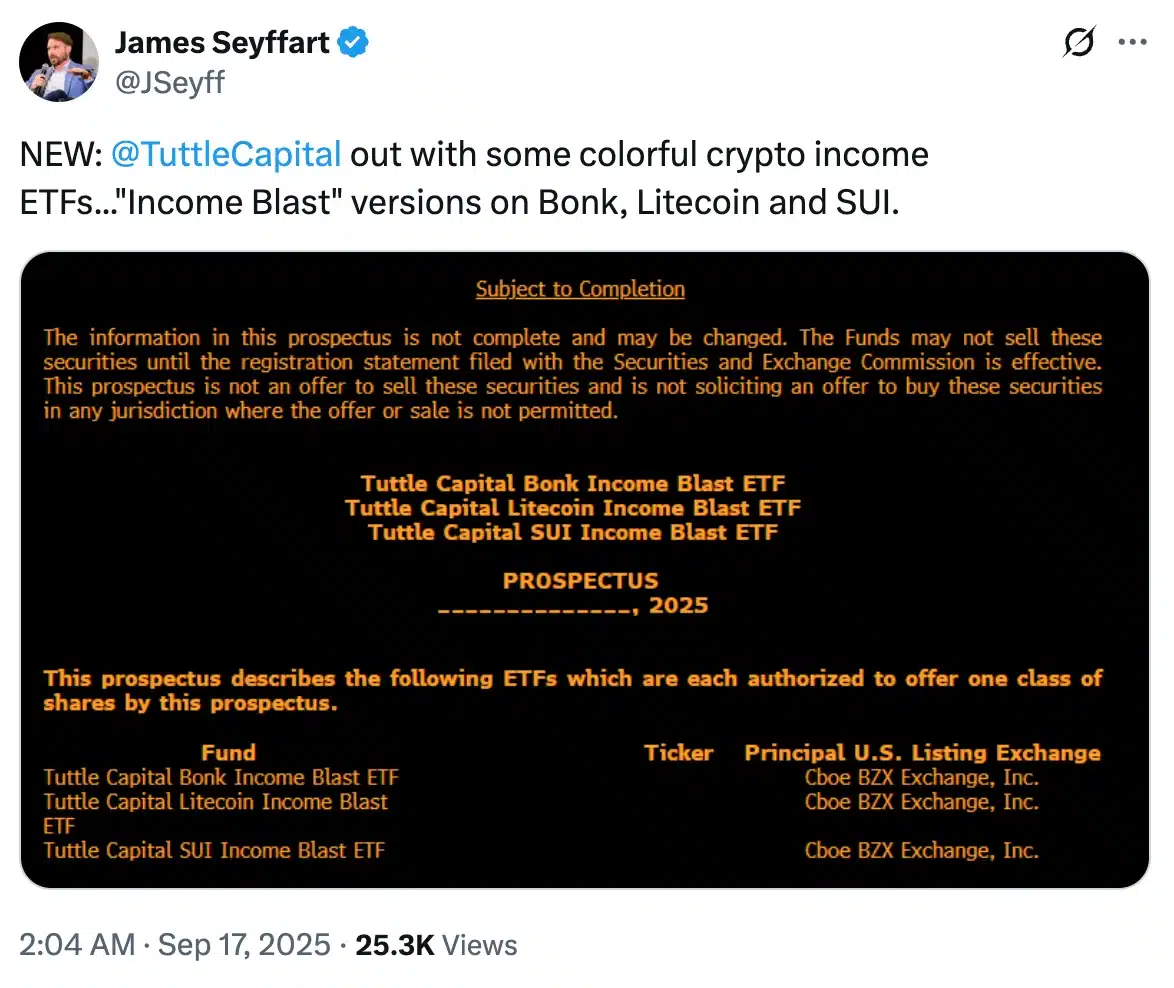The Bonk Income Blast ETF is a spot-BONK product that prioritizes current income using a put credit spread executed via FLEX Options, offering capped upside exposure to BONK while aiming for transparent price discovery and reduced OTC counterparty risk.
-
Income-first design with capped upside exposure to BONK
-
Uses FLEX Options put credit spreads for customizable terms and clearer price discovery
-
Initial market reaction: BONK rose ~4% after the filing; SUI and LTC saw modest gains
Bonk Income Blast ETF — Front-loaded details on BONK ETF structure, FLEX Options strategy, and market impact. Read the filing summary and market reaction.
What is the Bonk Income Blast ETF?
The Bonk Income Blast ETF is a proposed spot-BONK exchange-traded fund from Tuttle Capital that prioritizes current income by implementing put credit spreads via FLEX Options. The fund aims to offer controlled exposure to BONK with capped gains while improving price discovery and lowering certain counterparty risks.
How does the FLEX Options put credit spread work in this fund?
The fund proposes using FLEX Options to write put credit spreads that generate premium income. FLEX Options allow customization of strike, expiration, and contract style, enabling the ETF to set defined risk-return parameters.
This strategy seeks steady income first; token tracking is secondary and limited by the fund’s capped upside design.
How did the market react to the filing?
Market sentiment turned cautiously positive after the September 16 filing. BONK rose roughly 4% to about $0.0000242 before easing, while SUI climbed over 3% and LTC showed small intraday gains.
These moves reflected speculative and thematic interest in meme-token structured products, despite the broader regulatory delays affecting spot crypto ETF approvals.
Who commented on the filing?
Bloomberg ETF analyst James Seyffart noted the filing’s creative, income-first structure and its potential to broaden product design in crypto ETFs. Source: James Seyffart/X (plain text).

Source: James Seyffart/X
Why is Tuttle Capital pursuing income-first crypto ETFs?
Tuttle Capital’s filings — Bonk Income Blast ETF, Litecoin Income Blast ETF, and Sui Income Blast ETF — indicate a strategy to attract investors seeking yield exposure to digital assets while controlling downside risk.
By embedding option overlays, the issuer aims to deliver predictable distributions and a clearer risk profile compared with plain spot token exposure.
Were tokens materially affected after the filing?
BONK recorded a near-term gain of approximately 4% to $0.0000242, later settling around $0.00002376 (still up ~2.36% at press time). SUI traded near $3.61 (+3%+) and LTC reached about $115.2 intraday before easing to $114.71.
Frequently Asked Questions
How does the Bonk Income Blast ETF generate income?
The fund generates income by selling put credit spreads via FLEX Options, collecting premium while defining downside exposure and capping potential upside. This income-first approach prioritizes distributions over pure token tracking.
When was the filing submitted?
Tuttle Capital submitted the application under the Investment Company Act of 1940 on September 16, 2025. The filing places the BONK ETF alongside proposed LTC and SUI Income Blast ETFs.
Key Takeaways
- Income-first structure: The Bonk Income Blast ETF prioritizes distributions by using put credit spreads.
- FLEX Options use: FLEX Options provide contract customization, improving price discovery and reducing some OTC risks.
- Market reaction: BONK rose ~4% after the filing; SUI and LTC saw modest gains, reflecting investor interest.
Conclusion
The Bonk Income Blast ETF reflects a novel approach to spot-token ETFs by front-loading income generation and using FLEX Options to set defined exposure. As regulators continue to review crypto ETF filings, market participants and analysts such as James Seyffart are watching whether income-focused structures gain traction. For continued updates, follow COINOTAG coverage.
Author: COINOTAG
Published: 2025-09-16
Updated: 2025-09-16






